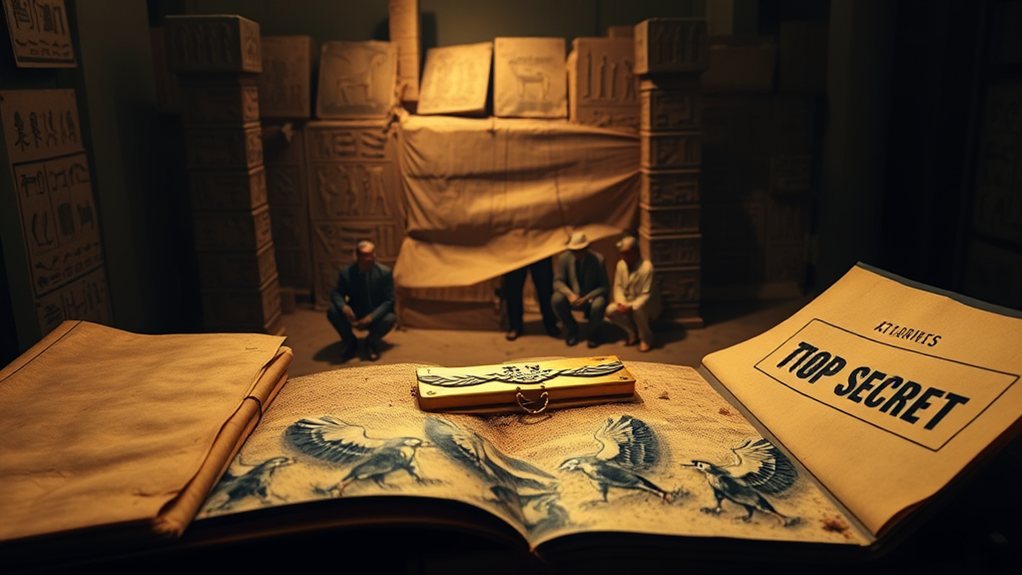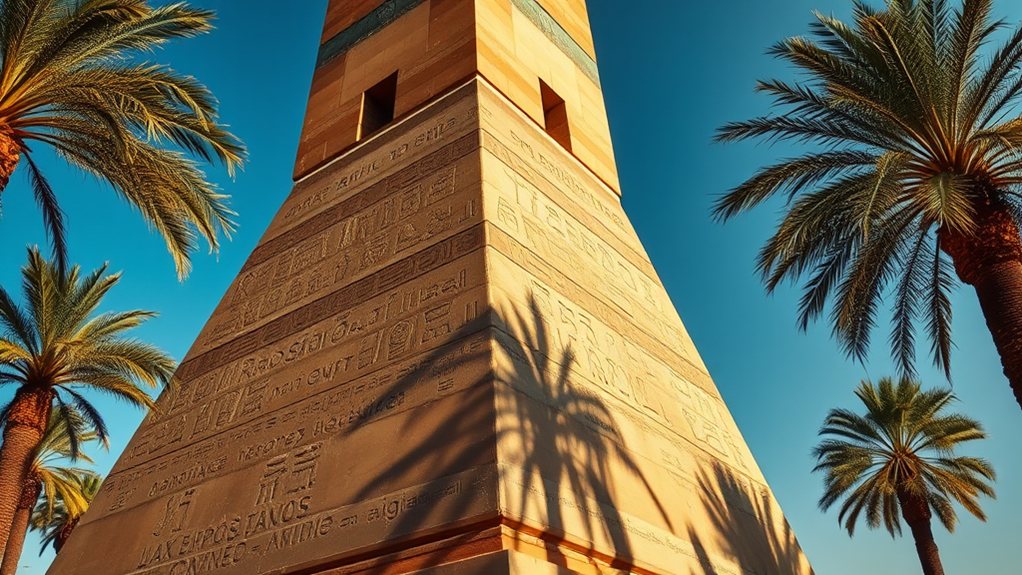
While the CIA’s remote viewing program has long been a source of intrigue, newly declassified documents reveal an unexpected target: the Ark of the Covenant. In the 1980s, the agency’s Sun Streak project employed individuals with claimed psychic abilities to locate various targets, including this sacred biblical artifact.
The Ark of the Covenant, believed to have contained the stone tablets of the Ten Commandments, has fascinated researchers and religious scholars for centuries. According to the declassified files, a remote viewer identified what they described as a “container” at a specific location in the Middle East in 1988.
Remote viewers claimed to locate a mysterious container in the Middle East, possibly the legendary Ark holding the Ten Commandments.
You’ll find that the CIA’s interest in remote viewing wasn’t limited to traditional espionage. The program explored archaeological discoveries, with operatives attempting to locate ancient artifacts and structures. Some sessions even included claims of identifying pyramids on Mars, though these findings remain controversial.
The public’s response to these revelations has been mixed. You’ll see comments ranging from deep skepticism to intense curiosity about the potential discovery. Some have connected these findings to Ethiopia’s long-standing claim of possessing the Ark, while others point to various Middle Eastern locations as possible sites.
The documents have sparked theories about the Ark’s true nature and its potential technological significance. You’ll notice that discussions often include speculation about ancient civilizations and possible connections to extraterrestrial influences, though these remain unverified theories.
Researchers continue to explore ceremonial sites and ancient structures in the Middle East that might relate to the Ark’s history. The Church of the Holy Sepulchre in Jerusalem and various pyramidal structures have drawn particular attention from those studying these declassified files.
The CIA’s remote viewing program and its alleged discovery of the Ark remain subjects of ongoing debate. While the files don’t provide definitive proof of the Ark’s location, they’ve added an intriguing chapter to one of history’s most enduring archaeological mysteries.





